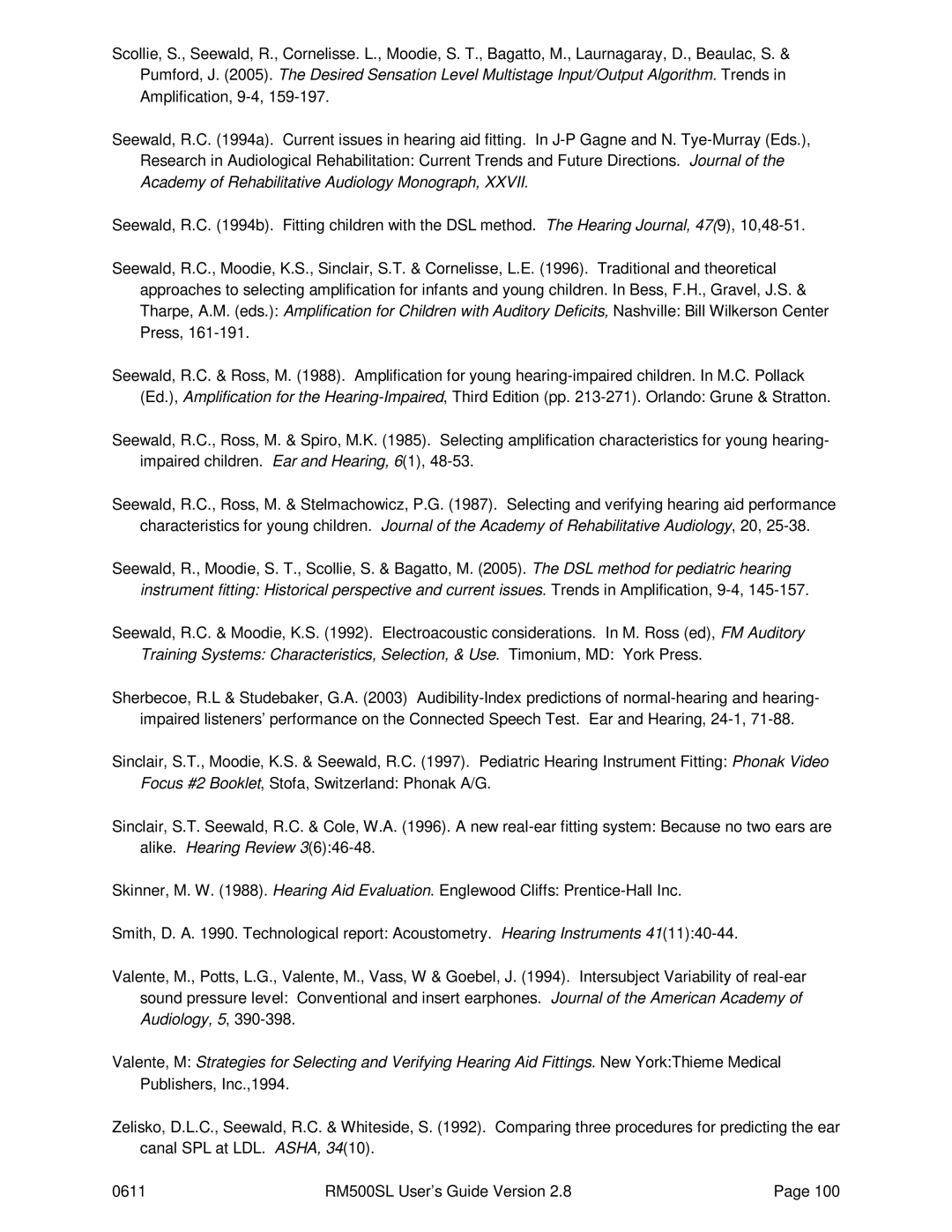Scollie, S., Seewald, R., Cornelisse. L., Moodie, S. T., Bagatto, M., Laurnagaray, D., Beaulac, S. & Pumford, J. (2005). The Desired Sensation Level Multistage Input/Output Algorithm. Trends in Amplification,
Seewald, R.C. (1994a). Current issues in hearing aid fitting. In
Research in Audiological Rehabilitation: Current Trends and Future Directions. Journal of the Academy of Rehabilitative Audiology Monograph, XXVII.
Seewald, R.C. (1994b). Fitting children with the DSL method. The Hearing Journal, 47(9),
Seewald, R.C., Moodie, K.S., Sinclair, S.T. & Cornelisse, L.E. (1996). Traditional and theoretical approaches to selecting amplification for infants and young children. In Bess, F.H., Gravel, J.S. & Tharpe, A.M. (eds.): Amplification for Children with Auditory Deficits, Nashville: Bill Wilkerson Center Press,
Seewald, R.C. & Ross, M. (1988). Amplification for young
Seewald, R.C., Ross, M. & Spiro, M.K. (1985). Selecting amplification characteristics for young hearing- impaired children. Ear and Hearing, 6(1),
Seewald, R.C., Ross, M. & Stelmachowicz, P.G. (1987). Selecting and verifying hearing aid performance characteristics for young children. Journal of the Academy of Rehabilitative Audiology, 20,
Seewald, R., Moodie, S. T., Scollie, S. & Bagatto, M. (2005). The DSL method for pediatric hearing instrument fitting: Historical perspective and current issues. Trends in Amplification,
Seewald, R.C. & Moodie, K.S. (1992). Electroacoustic considerations. In M. Ross (ed), FM Auditory Training Systems: Characteristics, Selection, & Use. Timonium, MD: York Press.
Sherbecoe, R.L & Studebaker, G.A. (2003)
Sinclair, S.T., Moodie, K.S. & Seewald, R.C. (1997). Pediatric Hearing Instrument Fitting: Phonak Video Focus #2 Booklet, Stofa, Switzerland: Phonak A/G.
Sinclair, S.T. Seewald, R.C. & Cole, W.A. (1996). A new
Skinner, M. W. (1988). Hearing Aid Evaluation. Englewood Cliffs:
Smith, D. A. 1990. Technological report: Acoustometry. Hearing Instruments
Valente, M., Potts, L.G., Valente, M., Vass, W & Goebel, J. (1994). Intersubject Variability of
Valente, M: Strategies for Selecting and Verifying Hearing Aid Fittings. New York:Thieme Medical Publishers, Inc.,1994.
Zelisko, D.L.C., Seewald, R.C. & Whiteside, S. (1992). Comparing three procedures for predicting the ear canal SPL at LDL. ASHA, 34(10).
0611 | RM500SL User’s Guide Version 2.8 | Page 100 |
